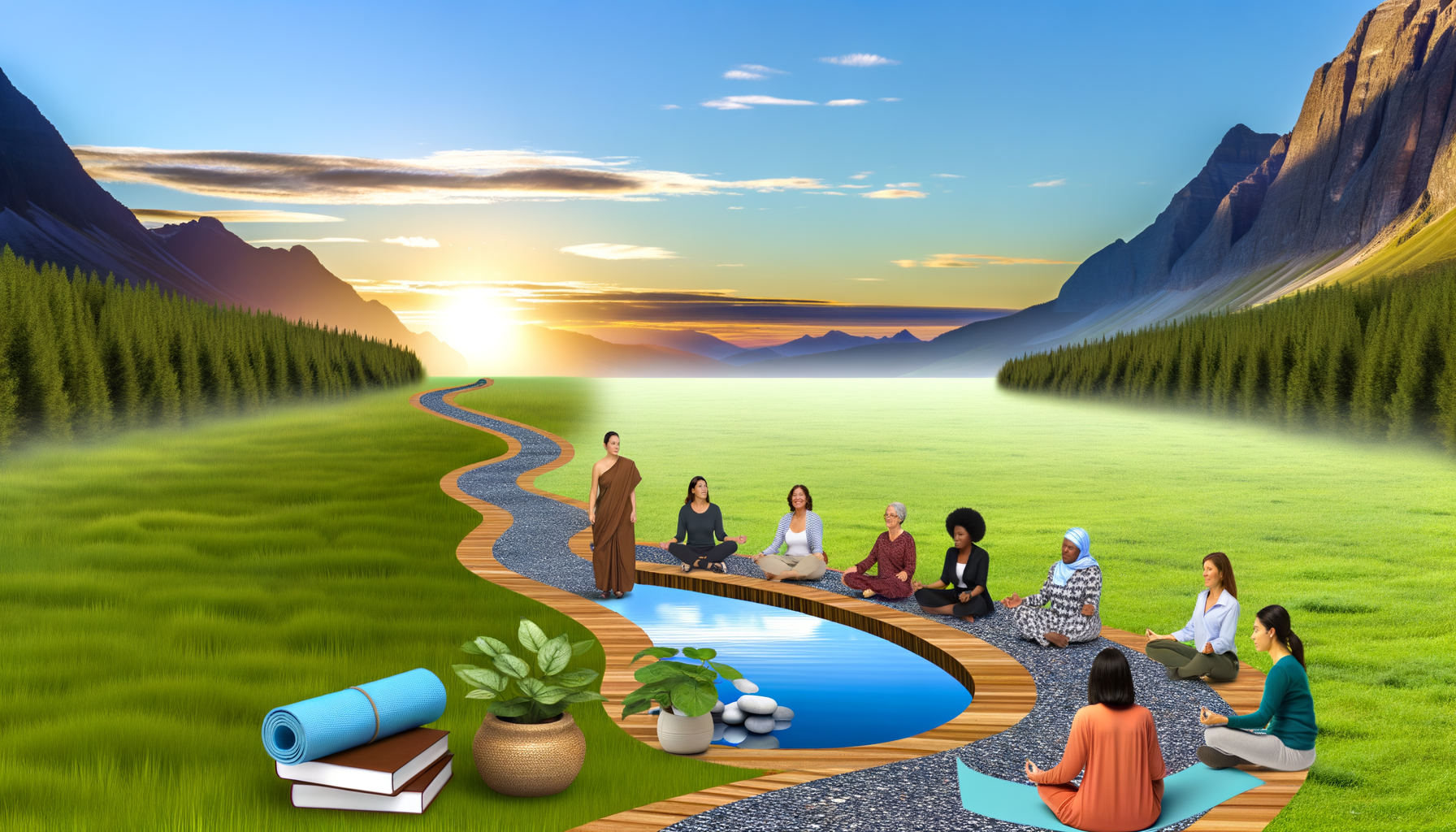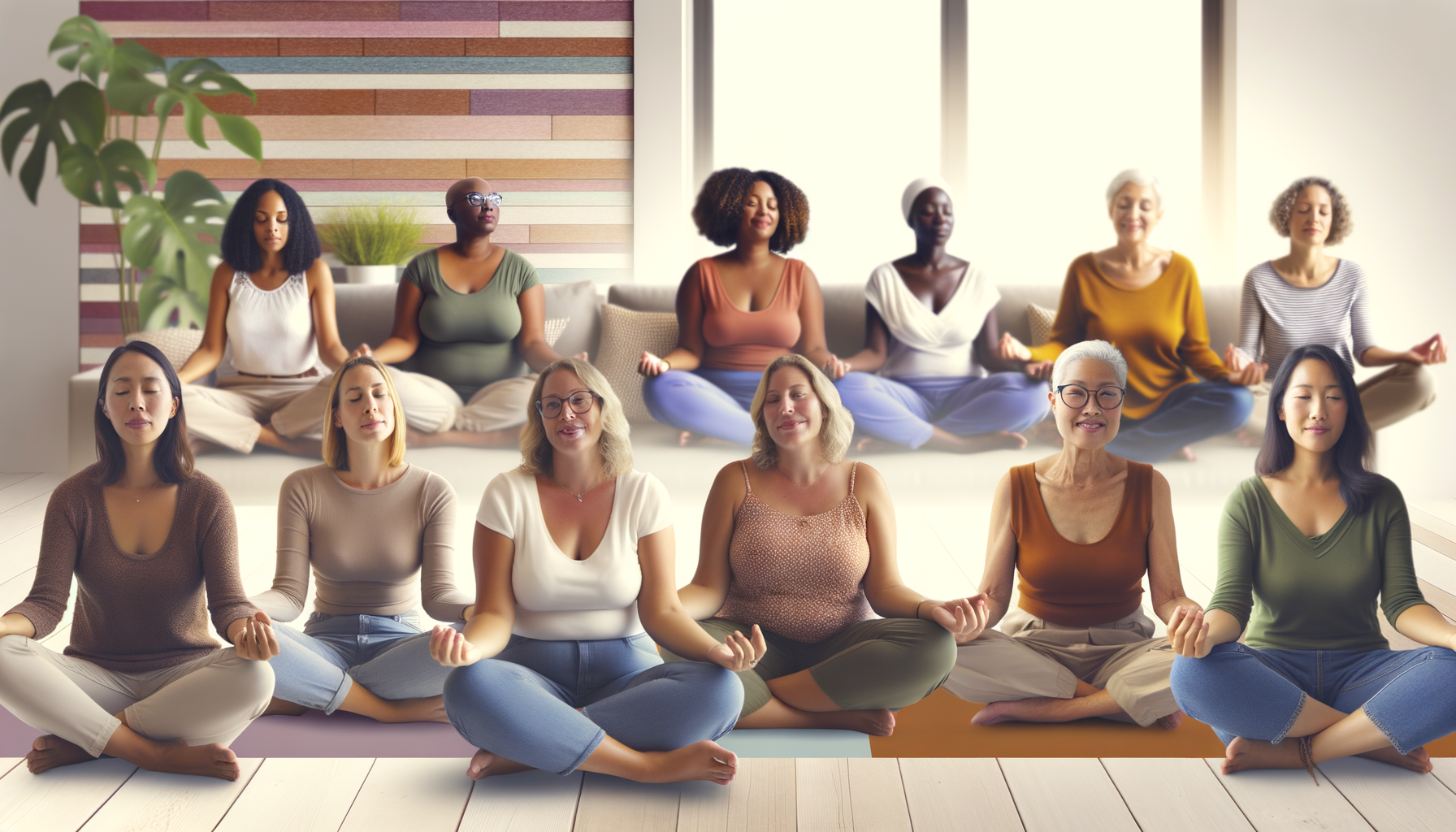
Introduction
Understanding Self-Care
Self-care is a term that has gained significant traction in recent years, yet its true essence often remains misunderstood. At its core, self-care is the practice of taking an active role in protecting one’s own well-being and happiness, particularly during periods of stress. It is not merely an indulgence but a fundamental aspect of maintaining a balanced and healthy life. Self-care encompasses a variety of activities and practices that nurture the body, mind, and soul, ranging from physical exercise and proper nutrition to mindfulness and adequate rest.
The Importance of a Structured Day
Structure is the scaffolding of daily life; it brings order to chaos and shapes our routines into productive patterns. A structured day is not about rigidity but about creating a framework that allows for the pursuit of goals, the management of responsibilities, and the inclusion of self-care practices. By establishing a routine, individuals can enhance focus, increase productivity, and reduce stress. Moreover, a well-structured day can prevent decision fatigue by providing a clear plan of action, leaving mental space for creativity and inspired action.
What is a Self-Care Blueprint?
A Self-Care Blueprint is a personalized plan that integrates self-care practices into daily life. It is a strategic approach to ensuring that self-care is not left to chance but is woven into the fabric of one’s daily routine. This blueprint acts as a guide, outlining when and how to engage in self-care activities that rejuvenate and empower the individual. It is a living document, adaptable to the changing needs and circumstances of life, and serves as a reminder to prioritize one’s well-being amidst the hustle and bustle of everyday existence. By crafting a Self-Care Blueprint, individuals can create a balanced life that harmonizes the demands of work with the tranquility of personal time, leading to a state of success and serenity.
Morning Rituals: Setting the Tone for the Day
Mindful Awakening
Each day presents a fresh canvas, and how we begin our mornings can significantly influence the rest of our day. A mindful awakening is about greeting the new dawn with intention and awareness. Instead of reaching for your phone or jumping out of bed in a rush, take a few moments to simply be. Deep breathing, stretching, or a brief meditation can help center your thoughts and awaken your senses gently. This practice sets a calm and purposeful tone, allowing you to start the day grounded and focused.
Physical Activity
Engaging in physical activity in the morning can energize your body and clarify your mind. Whether it’s yoga, a brisk walk, or a full workout, exercise releases endorphins that boost your mood and increase your alertness. It doesn’t have to be lengthy; even a short session can have profound effects on your physical and mental well-being. By making exercise a staple of your morning routine, you’re not only taking care of your body but also building momentum that carries through the day.
Nourishment and Hydration
After hours of sleep, your body needs to replenish its energy reserves. A balanced breakfast provides the essential nutrients to kickstart your metabolism and fuel your morning activities. Incorporate proteins, whole grains, and fruits into your meal for sustained energy. Hydration is equally important; drinking water upon waking helps to rehydrate your body, improve digestion, and boost brain function. Consider starting with a glass of water before any other morning beverage to ensure you’re hydrating adequately.
Setting Intentions
Before the day’s demands take over, take a moment to set your intentions. What do you want to achieve today? How do you want to feel? Setting intentions provides direction and purpose, acting as a compass for your actions throughout the day. Write down your goals, visualize your tasks being completed successfully, and affirm your ability to handle whatever comes your way. This practice not only prepares you mentally but also aligns your energy with your aspirations, creating a powerful impetus for success and serenity.
Workday Strategies: Balancing Productivity and Well-being
Time Management Techniques
Effective time management is the cornerstone of a productive workday. Start by identifying your peak productivity periods and schedule your most challenging tasks during these times. Utilize tools like digital calendars and to-do lists to organize and prioritize your daily tasks. Consider the Pomodoro Technique, which involves working in focused bursts followed by short breaks, to maintain a high level of productivity without burnout. Remember, the goal is not just to work harder, but smarter.
Mindfulness at Work
Mindfulness at work means being fully present and engaged with the task at hand. It involves conscious breathing and regular pauses to center yourself throughout the day. When stress levels rise, take a moment to practice mindfulness; even a few deep breaths can reset your focus and reduce anxiety. Cultivate a habit of mindful listening during meetings and conversations, which can improve communication and relationships with colleagues.
Regular Breaks and Movement
Regular breaks are vital for maintaining mental clarity and physical health. Aim to take a five-minute break every hour to stand up, stretch, or walk around. This not only combats the negative effects of prolonged sitting but also recharges your brain for better concentration. Incorporate simple desk exercises or a quick stroll outside to invigorate your body and mind. These moments of movement can significantly boost your energy levels and productivity.
Healthy Work Environment
A healthy work environment is essential for well-being and productivity. Start by personalizing your workspace with plants or photos to create a comforting and inspiring atmosphere. Ensure your desk setup promotes good posture, with ergonomic furniture and adequate lighting to prevent strain and fatigue. Advocate for a positive company culture that supports work-life balance and open communication. A supportive and healthy workplace not only enhances individual well-being but also contributes to the overall success of the organization.
By integrating these strategies into your workday, you can achieve a harmonious balance between productivity and well-being. Remember, a self-care blueprint at work is not a one-size-fits-all; it requires personalization and regular refinement to align with your evolving needs and goals.
Afternoon Practices: Maintaining Energy and Focus
Balanced Lunch Choices
As the midday bell tolls, it’s crucial to refuel with a balanced lunch that sustains energy levels and sharpens focus for the remainder of the day. Opt for a mix of lean proteins, whole grains, and fresh vegetables to create a meal that is both satisfying and nutritious. Foods rich in omega-3 fatty acids, such as salmon or walnuts, can enhance cognitive function, while fiber from whole grains ensures a steady release of energy, preventing the all-too-common afternoon slump. Remember to include a piece of fruit for a natural sugar boost and antioxidants.
Short Meditation or Power Nap
After lunch, a brief period of mindfulness or rest can significantly improve mental clarity and productivity. Engage in a 10-15 minute meditation session to clear your mind and reduce stress. Alternatively, a 20-minute power nap can rejuvenate your senses and enhance alertness. These practices serve as a reset button, allowing you to approach the rest of your day with renewed vigor and a calm, focused mindset.
Social Interaction and Downtime
Human connection plays a vital role in our overall well-being. Carve out time for social interaction with colleagues or friends, even if it’s just a brief chat over coffee. This can lift your spirits and foster a sense of community. Additionally, allow yourself some downtime to engage in activities that bring you joy, whether it’s reading a book, taking a walk, or simply sitting in a quiet space. These moments of leisure are not only acts of self-care but also essential for maintaining long-term productivity and creativity.
Evening Wind-Down: Transitioning to Relaxation
Digital Detox
As the sun sets and the day’s tasks come to a close, it’s essential to disconnect from the digital world to ensure a peaceful transition into relaxation. Designate the last hour before bed as a screen-free time. This means turning off smartphones, computers, and televisions. The blue light emitted by screens can disrupt your circadian rhythm and impede the production of melatonin, the hormone responsible for sleep. Instead, engage in activities that allow you to unwind and reflect, such as reading a book, journaling, or practicing gentle yoga.
Relaxation Techniques
Integrating relaxation techniques into your evening routine can significantly enhance the quality of your rest. Techniques such as deep breathing exercises, progressive muscle relaxation, or guided imagery can help calm the mind and release physical tension. You might also consider a warm bath with Epsom salts or essential oils to soothe muscles and prepare your body for sleep. The key is to find what works best for you and make it a consistent part of your nightly ritual.
Reflecting on the Day
Reflection is a powerful tool for personal growth and closure. Take a moment to ponder the events of the day. Acknowledge your accomplishments, no matter how small, and consider what lessons can be learned from the challenges you faced. This practice not only fosters a sense of gratitude but also helps to clear your mind, making it easier to let go of any stress or worries before bedtime.
Preparation for the Next Day
Preparing for the next day can alleviate morning stress and contribute to a serene night’s sleep. Lay out your clothes, prepare your lunch, or jot down a to-do list for the following day. By organizing your thoughts and tasks the night before, you create a sense of control and intention, which can lead to a more restful and undisturbed sleep. Remember, a little preparation goes a long way in fostering a calm and centered mind.
In conclusion, your evening wind-down is a crucial component of your self-care blueprint. By incorporating a digital detox, relaxation techniques, reflection, and preparation into your nightly routine, you create an environment conducive to success and serenity. Embrace these practices as sacred steps towards a restorative night’s sleep and a more harmonious life.
Nighttime Rituals: Ensuring Restorative Sleep
Creating a Restful Environment
As the day draws to a close, the environment in which we sleep becomes the foundation for a restorative night. To foster a sanctuary of tranquility, consider dimming the lights an hour before bed, signaling to your body that it’s time to wind down. Ensure your bedroom is cool, quiet, and comfortable. Invest in quality bedding and consider blackout curtains or a sleep mask to block out any disruptive light. The goal is to create a space that is conducive to sleep, free from distractions and conducive to relaxation.
Sleep Hygiene Practices
Good sleep hygiene is essential for a restful night. Begin by establishing a consistent sleep schedule, going to bed and waking up at the same time every day, even on weekends. This regularity reinforces your body’s sleep-wake cycle. Avoid caffeine and heavy meals close to bedtime, as they can disrupt your ability to fall asleep. Instead, opt for a light, nutrient-rich snack if needed. Limit exposure to screens and the blue light they emit by turning off electronic devices at least an hour before bed. If necessary, use night mode settings to minimize blue light exposure. Engage in calming activities such as reading, gentle stretching, or listening to soft music to prepare your mind and body for sleep.
Gratitude and Positive Affirmations
Ending the day on a positive note can influence the quality of your sleep and your mindset for the next day. Take a moment to reflect on the day’s events, focusing on the positives and expressing gratitude. This practice can shift your mind away from stress and towards a state of contentment. Incorporate positive affirmations into your nighttime routine to foster a sense of peace and self-assurance. Repeating affirmations such as “I am calm and content” or “I have done my best today” can help soothe your mind and ease you into a restful sleep.
By integrating these nighttime rituals into your daily routine, you create the conditions for a deep, restorative sleep that rejuvenates both body and mind. This, in turn, sets the stage for a successful and serene day ahead.
Personalizing Your Self-Care Blueprint
Assessing Your Needs and Preferences
Creating a self-care blueprint begins with a deep and honest assessment of your personal needs and preferences. This introspective process involves identifying the areas of your life that require more attention and care. Start by asking yourself questions like: What rejuvenates me? What activities help me to de-stress? How do I prefer to start and end my day? Reflect on the eight areas of self-care: physical, emotional, social, intellectual, spiritual, environmental, financial, and occupational. By understanding your unique needs across these dimensions, you can tailor your self-care practices to support a holistic sense of well-being.
Incorporating Flexibility and Adaptability
Life is unpredictable, and a rigid self-care routine can quickly become another source of stress. To avoid this, infuse your self-care blueprint with flexibility. Allow room for spontaneity and adjustments based on your day-to-day experiences. For instance, if an unexpected work deadline arises, be prepared to modify your evening relaxation routine accordingly. Embrace the ebb and flow of life by having alternative self-care options that can be easily integrated into your changing schedule.
Tracking Progress and Making Adjustments
As with any plan, tracking your progress is crucial for success. Keep a self-care journal or use digital tools to monitor your routines and their impact on your well-being. Be vigilant about what works and what doesn’t, and don’t hesitate to make adjustments. This iterative process is key to developing a self-care blueprint that evolves with you over time, ensuring that your practices remain effective and relevant to your current circumstances.
Seeking Support and Community
While self-care is a personal journey, having a supportive community can enhance your efforts. Share your self-care goals with friends or family who can offer encouragement and hold you accountable. Consider joining groups or forums that focus on well-being to connect with like-minded individuals. These communities can provide valuable insights, inspiration, and a sense of belonging, all of which can bolster your commitment to self-care.
In conclusion, personalizing your self-care blueprint is not a one-time task but an ongoing process of reflection, experimentation, and growth. By assessing your needs, incorporating flexibility, tracking progress, and seeking support, you can create a self-care routine that not only nurtures your well-being but also adapts to the ever-changing landscape of your life.








